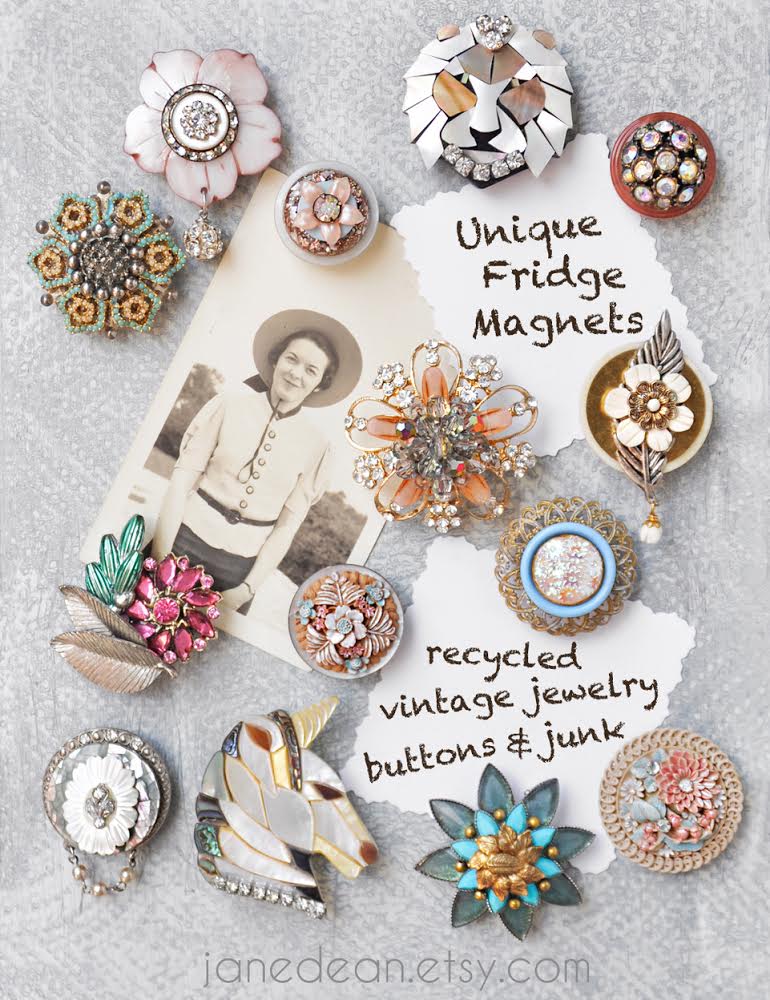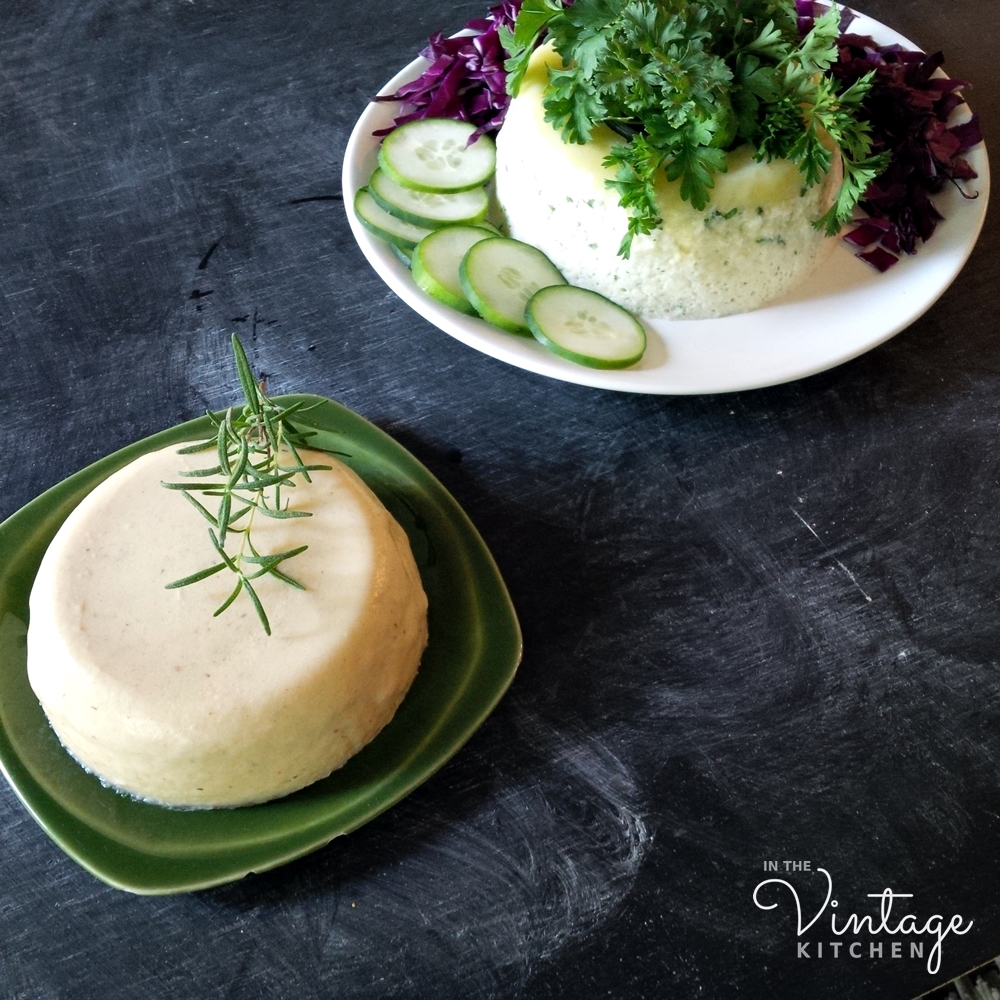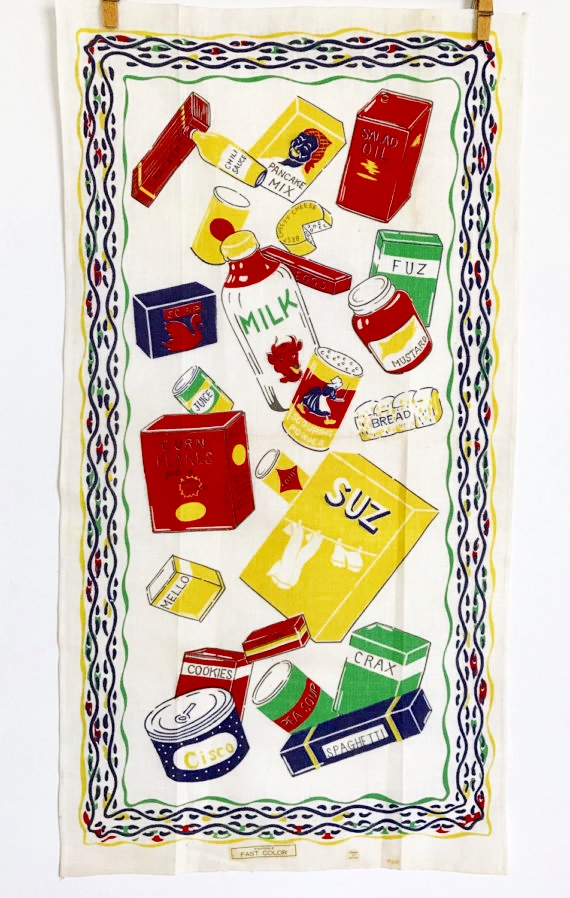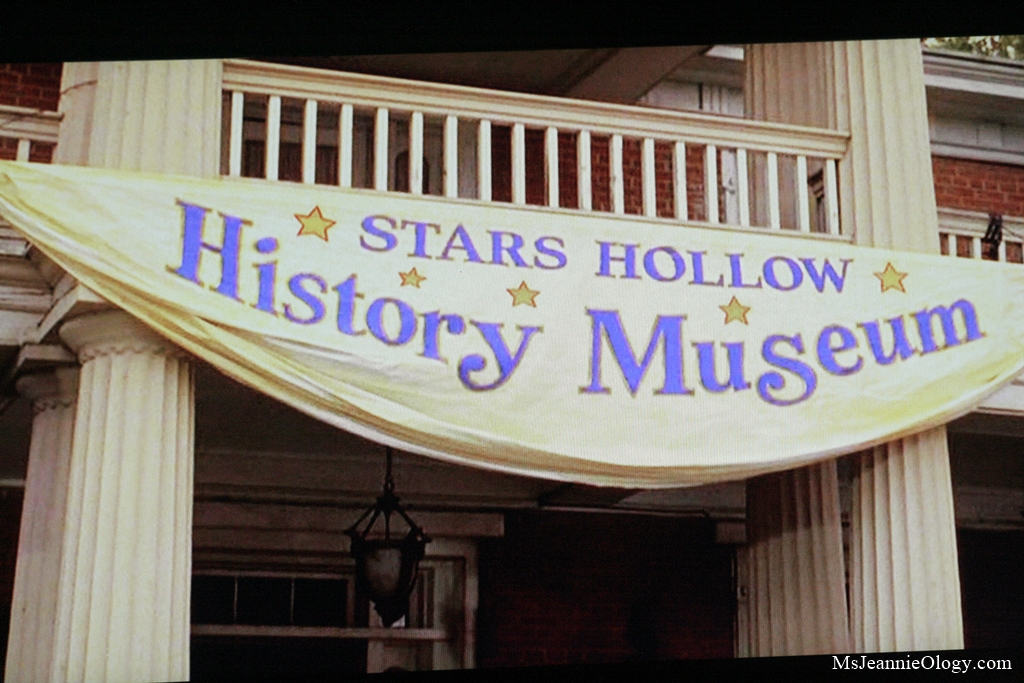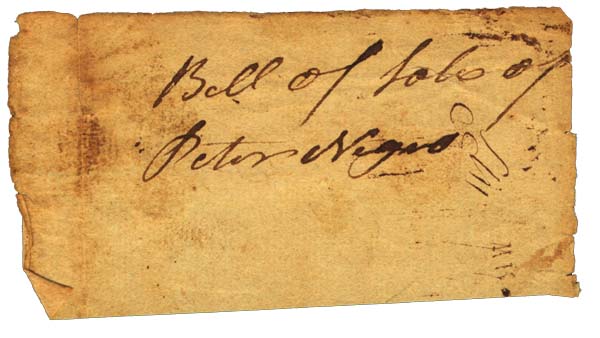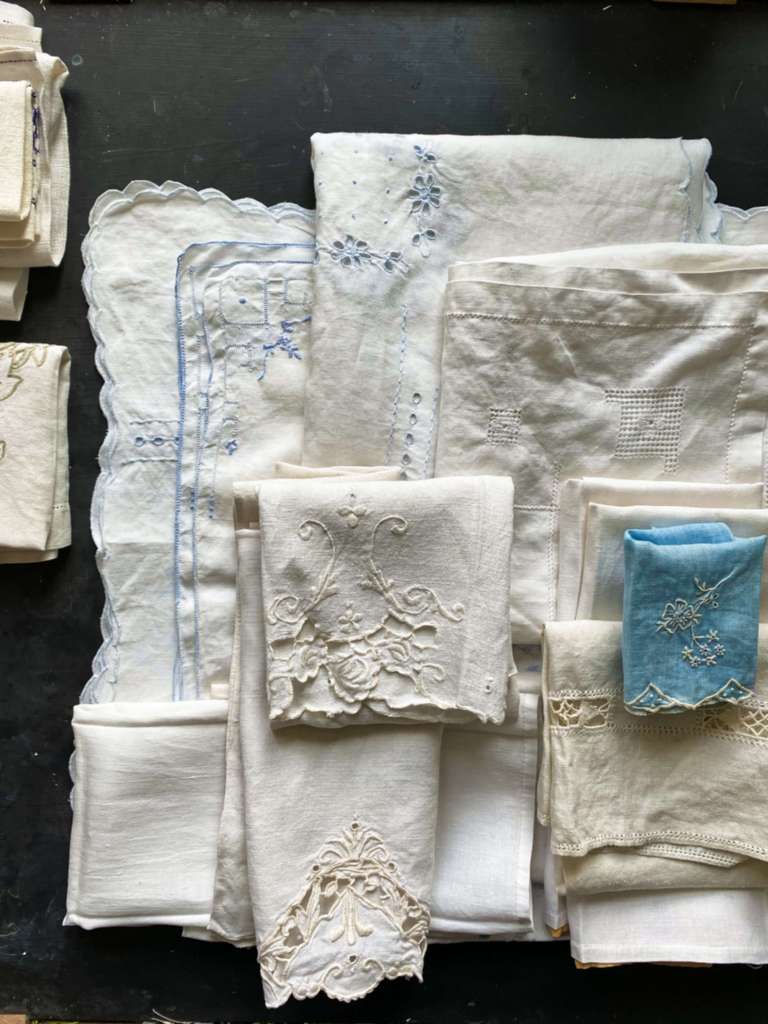
One of the biggest travesties in discovering a vintage embroidered linen at an antique shop or an estate sale or an auction house is not knowing anything about the sewer who made it. The sewer who so beautifully executed a specific stitch or a scene. The sewer who skillfully transformed a plain piece of fabric into a stunning work of art. Who spent hours or days working towards a piece of self-expression in the same way a painter paints a canvas or a sculptor builds a statue. With the exception of antique samplers and quilts, which often carry the names of the artist who made them, embroidered linens of the past are history’s most uncredited works of art.
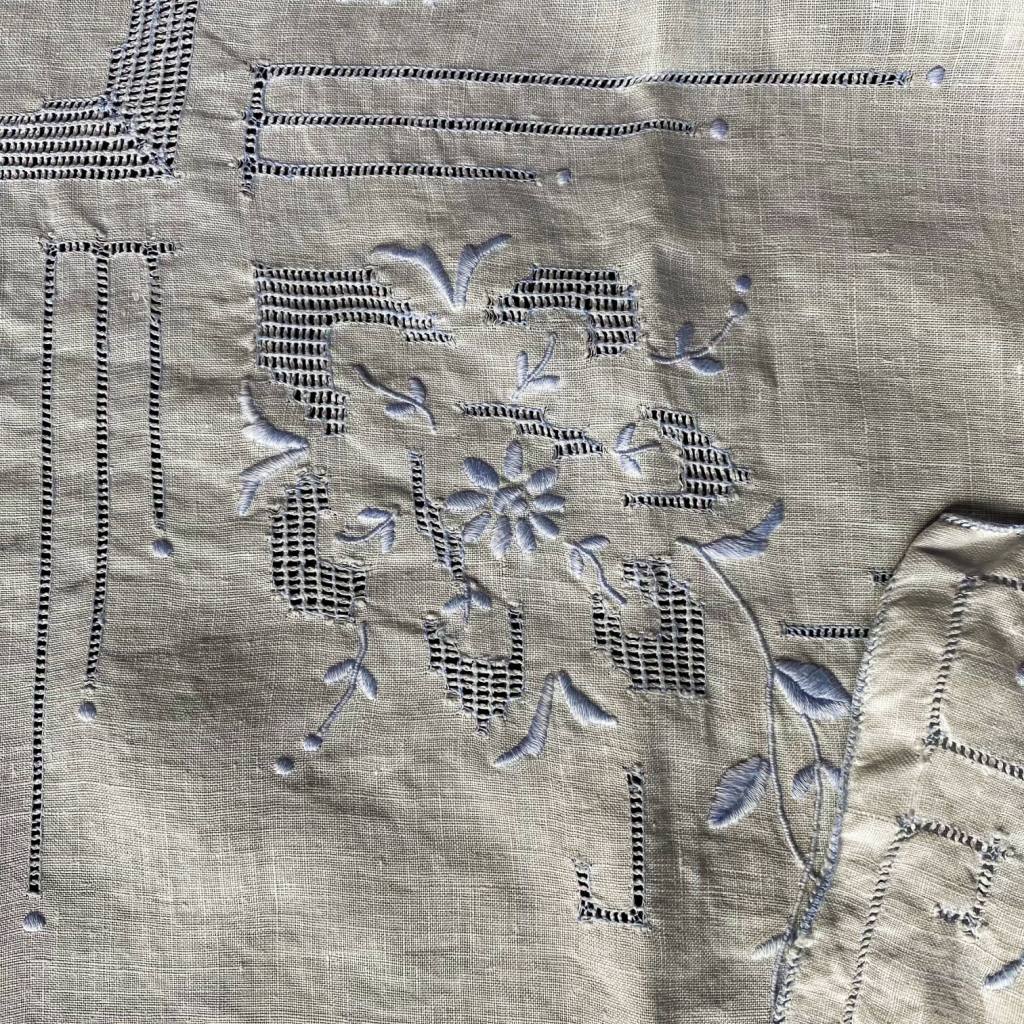
“These small bits of embroidered cloth are often all that remains to testify to the otherwise unrecorded lives of their makers,” wrote Amelia Peck in a 2003 article highlighting the embroidery collection at the Metropolitan Museum of Art. It could be easy to dismiss some old pieces of fabric until you read a statement like that.
Needless to say, Amelia’s remark has stuck with me for a long time. Whenever a new batch of vintage or antique linens comes into the shop, I always think about the woman behind the fabric, the sewer behind the stitchwork, and the circumstances in history that might have surrounded them both. In collecting and curating these items for the shop, I’m not often afforded any real-life stories that can be attached and retold about a specific linen or the life that made it. But today I’m very pleased to introduce you to a woman in Minnesota who has some stories to share about sewing.
At this point, you might be nonchalant and think how much can I learn from an 8” inch x 8” inch piece of fabric? A napkin is a napkin afterall. But here in the land of the Vintage Kitchen a napkin, as you’ll discover in this post is much more. It’s a gateway… to stories of the past.

When I first met DeDe, who is in her 70’s, it was over email in the beginning of February. She was looking to rehome her vintage linen collection, and in her initial inquiry as to whether or not I might be interested in it for the shop, she mentioned the fact that her mom had sewn some of the pieces. The slice of vintage life that poured out over the next several months and many emails was so interesting I knew hers was a story destined for the blog. Touching on Italian immigration, women’s history, cooking, Minnesota, entrepreneurism, family heirlooms and her mother’s zesty love of life, this interview turned out to be the perfect heartwarming story for Mother’s Day weekend. So yes, a napkin is a napkin. But it’s also a life, and a family, and a passion.
Let’s meet DeDe, her mom Teresa, and their family…

In The Vintage Kitchen: Tell us a little bit about your mom’s parents. What brought them to America? Where were they from in Italy and how did they wind up living in Minnesota? Did they assimilate well?
Dede: My grandparents, Carmina and Salvatore, were both from Boiano, Campobasso, Molise, Italy.

My grandparents were married in 1906 and in 1909 they came to Minnesota. Grandpa worked in the mines in Chisholm, Calumet, Stevenson and St. Paul. He was employed by the Pickands Mater Co. for over 40 years. There were many different nationalities on the Iron Range and I imagine like all immigrants today they left Italy and were looking for a better life. I never heard of anyone in the family having difficulty assimilating into the community as they were fortunate to have siblings and many Italians in their community. A sister of my Grandmother’s and a cousin and brother of my Grandfather also immigrated to Keewatin.
My mother Mary Teresa Rico was born on February 25, 1911 and was the oldest of six children. She was born in Hibbing, Minnesota and the town they lived in was Keewatin. A population of less than 2,000.

EDITORIAL NOTE: During her childhood throughout the 1920s, starting at the age of 10, Teresa was involved in 4-H, a youth development program whose mission was (and still is!) “to encourage kids to reach their fullest potential while also creating positive change within their community.” This experience turned out to be a gateway for Teresa – one in which she could showcase her natural talents and abilities. While naturally gifted in a range of extra-curricular activities including basketball, tennis and dramatics, two of Teresa’s most prized talents were baking and sewing. A consistent winner at state and county fairs, between the years 1921 and 1931, Teresa baked more than 1,000 cakes and 2,000 loaves of bread which she sold to local residents in an effort to raise money for her college tuition. Triumphantly, through those entrepreneurial endeavors, Teresa managed to raise $3000.00, which provided enough for her to enroll in the University of Minnesota.

In 1931, at the age of 20, the last year she was eligible to participate in 4-H due to age caps, Teresa won the Sir Thomas Lipton Trophy, competing against 490,000 other girls. This was an honor awarded by Thomas Lipton (of Lipton Tea fame) that signified overall achievement and was given to the top boy and top girl in 4-H. In addition to a trophy and significant media attention, the award also came with a scholarship, ensuring that Teresa would financially be able to put herself through college, assistance free, all on her own accord.

In The Vintage Kitchen: Your mom must have felt really proud of that moment, especially winning out over so many other 4-H’ers (490,000 female candidates!). Also, this happened in 1931, during the Great Depression. The fact that she was able to pay her way through college with her baking is fantastic. That must have been a really big deal. Were her parents really proud of her too?

DeDe: I am sure that my Grandparents were very proud of her winning the Sir Lipton Cup and also all the other accomplishments in her life, of which I refer to in the following questions. One of the newspaper clippings mentioned winning over 850,000 young women, quite a discrepancy.
My mother did not really talk about her accomplishments and honestly, I really did not learn about how much she really did until my parents downsized into an apartment. My mother had kept newspaper clippings, pictures, ribbons from the State Fair, etc. But my father did not keep much so he was tossing much of this into the trash barrel. I was able to rescue some of it and put it into a scrapbook for her. After that, we really did start to talk about her accomplishments in detail.

Sadly, as children we are absorbed in our own lives. This is not to say that I was not aware of the bolts of fabric and the sewing she was doing when I was a young child as well as the entertaining and fabulous cooking and baking that she was always doing. When I was in junior high school my mother was no longer sewing for others and instead went to work in retail. She had an incredible style knowledge for clothing and furnishings and an eye for fashion. The perk for me were the wonderful fashionable outfits I owned.
In The Vintage Kitchen: The Lipton Trophy newspaper article mentions that she was “boss of her household” both in the kitchen and otherwise. Can you tell us a little bit more about her family life growing up?
DeDe: My mother and her siblings all enjoyed sports and her brothers all played football in high school and the girls played whatever sports were offered for them but it sounded like choir and drama were offered to women. At home, my grandparents listened to records which were mostly opera. They all enjoyed dancing and playing cards with friends and family. Neighbors would get together and socialize. Food was always involved. The siblings all enjoyed one another which continued on for them as adults. My uncles loved to play jokes and there was always a lot of laughter and singing. Perhaps they all thought they were Enrico Caruso.

As far as my mother’s role at home, she shared that she would often make meals for her family and certainly she made all the bread. She was also sewing her own clothes as well as making dresses for her sisters and mother. Often her family pictures indicated that she had sewn the clothing her mother or siblings were wearing. Again, my mother was the oldest and she was a very strong determined woman who knew exactly what she wanted. Not a bad trait to have.

In The Vintage Kitchen: Did her parents speak English?
DeDe: Yes, my Grandparents spoke English very well but when my aunts and uncles would come over to our house on weekends to see Grandma and Grandpa, they all spoke Italian. We had many family Sunday dinners at home as everyone wanted to see Grandma and Grandpa. It was frustrating to not know what they were saying because I nor my siblings and cousins did not speak any Italian other than a few words.
In The Vintage Kitchen: Were her brothers and sisters equally as industrious?
DeDe: My uncle Pat was a chef and the others all made a decent living but no one was as driven or creative as my mother.
In The Vintage Kitchen: Tell us a little bit about your dad. What was he studying at the University of Minnesota?
DeDe: My father’s heritage was English and Irish not Italian. His grandfather Ward immigrated to America from Ireland as a young boy with his widowed mother and siblings. His mother’s family originated from Colonial New England. He was a very patient and darling man with a very big heart and a great sense of humor. I always thought he was very handsome and debonair. He grew up in Wisconsin Rapids, Wisconsin. As far as my father’s culinary talents he loved to make chili and simple meals. However, he loved his desserts and there were always homemade cookies, pies, and cakes in our home. He studied engineering at the University of Minnesota.

In The Vintage Kitchen: What did your mom study?
DeDe: She studied Home Economics. My motherwas not only an accomplished baker and chef, she was also an accomplished seamstress and had her own cottage industry, Teresina. Neighborhood women sewed for my Mother and at that time she was paying them $5.00 an hour. She sewed beautiful women’s clothing, draperies, anything else you could imagine.
As a child we always went to Amluxson’s where I was able to pick out fabric for my first day of school. She made many of my clothes as well for my brother and sister. She reupholstered furniture as well and made men’s clothing too. Her industrial Singer was in our basement and I have beautiful memories of her singing while she sewed. A favorite was the Maurice Chevalier song Louise.
She also wrote articles for the Minneapolis Star Tribune called Sewing is Simple. Over the years my mother was someone who often was featured for her sewing or entertaining.

In The Vintage Kitchen: Did your dad encourage and support your mom as she started her Teresina sewing business?
DeDe: Definitely. My father was very supportive of whatever my mother wanted to do. And honestly if my mother wanted to do something nothing would stop her. She was a force to be reckoned with but as generous as could be.

My mother was color blind. Thread as you know used to be on wooden spools. My dad would write the colors of the thread on the spools for her.
In The Vintage Kitchen: We hear so much about gender discrimination regarding women in the 20th century, but it seems like your mom really defied a lot of those stereotypes (working, going to college, having her own business, etc.). Can you tell us a little bit about her motivations and about how her ideas were received within her family and her community?
DeDe: My mother had a strong desire and a dream to make things happen. She never spoke of any obstacles being in her way that I recall. She did mention that as a child in school they were not allowed to speak Italian, only English. There were so many nationalities on the range, that it would have been difficult for a teacher to deal with so many languages in a classroom.
Her family appreciated her and at any given time we had a relative living with us. Multigenerational homes were very common. My mother was very generous and shared whatever she had with others. She was also very involved with the Italian Community in Minneapolis. When she had her Teresina company in our home, she employed neighborhood women who she paid quite generously for that time.
Community-wise, looking at old newspaper clippings my mother was involved with the Minneapolis Symphony Orchestra and one year put on an Italian Feast as a Fund Raiser. There were three children in my family and my mother was involved in all our school activities from PTA and being a Scout Leader or a Den Mother to sewing costumes and lending her living room furniture for high school drama productions.

One of the greatest tributes to my mother and the impression she made on others became evident at her funeral. When she passed away and her obituary was in the newspaper, I received a call from a young woman who said she would like to come to my home and meet me. When my mother lived in her Minneapolis apartment building, she befriended this young woman whose parents were divorced. With this young women’s birthday coming up she made her a German Chocolate Birthday Cake and gave her pearl earrings from her days at the U of M. She was truly touched by my mother’s friendship and she wanted to speak at her upcoming funeral. I took a leap of faith and said okay to this request. She did speak that day and it turns out that she was a speaker for Billy Graham and she was incredible. What a gift she gave us. I regret that I did not stay in contact with her and what a treasure that tribute would be too own today.
In The Vintage Kitchen: What did she like about sewing?
I am sure it was the creativity of it all and the fact that she could make something beautiful and functional.

In The Vintage Kitchen: Where did she gather inspiration from in regards to her sewing projects?
DeDe: My mother had an ability to see how to improve things. It did not matter if it was a food item, a piece of furniture or a piece of fabric. She would have a vision and would make it happen. She loved to repurpose as evident in her Sewing is Simple articles for the Minneapolis Star Tribune. I had mentioned to you in earlier emails that she made clothing, drapes, upholstered furniture and wrote for the newspaper but there is more. My mother also came up with an idea for an adjustable elastic waistband for women’s skirts that she made from fabrics such as drapery material and chintz. She created a patent for it but unfortunately, someone else managed to maneuver it away from her. I have one of the skirts left that I use for a Christmas Tree Skirt.
EDITORIAL NOTE: I was thrilled to welcome Teresa’s vintage linen collection into the shop. These next few questions and accompanying photographs highlight some specific pieces from her carefully curated linen collection amassed throughout her life.
In The Vintage Kitchen: Did she sew all the linens that you sent?
DeDe: I do not believe that she sewed all of them. I know the applique ones with boats on them and definitely the items that have lace. Honestly, they have been in a cupboard for years either with my mother or myself and my mother passed away many years ago.

In The Vintage Kitchen: In the package that you sent, there are 4 tablecloths which I think you referred to as bridge cloths. Did your mom sew those?
DeDe: I always referred to them as bridge table cloths but others might call them a luncheon cloth. No, I believe those were purchased.
In The Vintage Kitchen: One of them, along with several other linens you sent, looks like they are made with antique fabric. Could they have belonged to your grandmother?
DeDe: Probably not. My mother also loved house sales and again had an eye for finding wonderful things to furnish a home.

In The Vintage Kitchen: Was your grandmother, Carmina, a sewer too?
DeDe: Not that I am aware of. I recall my grandmother having cataracts and her sight was compromised. My mother told me she had taught herself to sew as a young girl. She started off with making clothes for her dolls and as she grew older, she started to sew for herself and her sisters.
In The Vintage Kitchen: How long did your mother maintain Teresina?
DeDe: I believe she kept it going through the 1950s. She sewed her entire life. She would make outfits and Halloween costumes for the grandchildren. In the 1970s, she was still sewing some beautiful outfits for me.
In The Vintage Kitchen: Where did you grow up?
DeDe: I grew up in Minneapolis, Minnesota on one of the city lakes. It was an ideal time to live there.

In The Vintage Kitchen: Did your mom expect you to be as industrious as she was during her childhood?
DeDe: My mother accepted us for who we were. Keewatin is a small community and Minneapolis is not, so opportunities for me were vastly different than what was available for her. I honestly did not feel pressured to be anyone other than myself.
In The Vintage Kitchen: Did she teach you how to cook and sew?
DeDe: Yes, my mother taught me to bake and cook. It was wonderful to be in her kitchen with all of the wonderful smells and tastes. I love to cook and entertain in our home much as my mother always did. Baking and cooking for others brings me great joy. Sewing is another story. I can sew out of desperation, but I only enjoy small projects and the older I get the less I attempt. I am not a seamstress and sewing stresses me out although I always kept trying. I expected it to be as easy for me as it was for her. Fortunately, I did inherit her love of cooking.
In The Vintage Kitchen: Thank you so much for including your mom’s sauce recipe. Was this a recipe that was handed down to her or did she make it up on her own?
DeDe: It was probably a recipe that was given to her by Grandma Rico. It is a pretty traditional sauce. I have shared that recipe with so many friends along with my mother’s wisdom of you can always add more herbs so start off with less. Of course, when you add a meat to the sauce it definitely helps to flavor it. I adore my mother’s red sauce and often tried to make it just like hers. The last Christmas she was alive she stayed with us for a few days and we had a blast. We looked at her old slides of her travels to Italy with my dad, baked traditional foods, and just laughed a lot. I had started a red sauce and ran to the store for a few items that I needed. Later when I was stirring the sauce and tasting it, I was overjoyed at how wonderful it was. I exclaimed to my mother that I was thrilled that I could make it like hers. She just smiled and later admitted that while I was gone, she had doctored it.
In The Vintage Kitchen: Was your mom’s love of sewing and cooking passed down to any of your kids?
DeDe: Actually, all the kids are very good cooks and will try out new recipes. My oldest niece does fun sewing projects and is very creative and like my mother is great at repurposing. She also enjoys baking and shares recipes with me. My daughter will try new recipes and make lighter fare than I do. I tend to cook more old school than my kids do. My boys love to make pizza with a homemade crust. Sometimes my oldest and his wife will make pasta when time allows. Everything comes down to when time allows. The grandkids are all interested in cooking and baking which I just adore.
In The Vintage Kitchen: Where do you draw inspiration from for your own cooking?
DeDe: A favorite for me is to eat something out and then try to duplicate it at home. I have come up with some interesting dinners that way. I see something that looks tempting in a magazine or the newspaper and I will try it although I will often massage the recipe. My husband loves to tell me that I use them like a road map and then veer off course. I enjoy making Italian dishes for friends and family but I adored Splendid Table when Lynne Rossetto Kasper hosted it. She had a segment of what to make with a few ingredients in your refrigerator. I am a great one to try that method.
Lynne came to our home for a fund-raising dinner and I along with a friend were the ones that were cooking. Cooking for a professional cook and author was very intimidating. It turned out to be a fabulous evening.
In The Vintage Kitchen: Wow, DeDe! That’s amazing that you got to not only meet but also cook for Lynne! I’m a BIG fan of hers! What was that experience like?
DeDe: The dinner was very simple with a simple antipasto tray, roasted chicken, and delicious roasted root vegetables along with a tossed salad. I do not recall if I made homemade bread for this or purchased store-bought. My dessert was a fried Italian pastry that we called curly cues. They are fried in oil and dusted with powdered sugar or drizzled with honey. My mother always made these at Christmas and often I will too. I probably served the lemon sherbet with crème de menthe. There were six guests and Lynne that night. One was a surgeon who was kind enough to slice the chicken and arrange it on the platter and another was a woman who owns a cooking school and I believe leads trips to Italy or did back then. I consider myself a decent cook but felt a little out of my league that evening. Unfortunately, we did not take pictures of that fabulous evening but my Lynne Rossetto Kasper cookbook is signed by Lynne. This was years ago.

In The Vintage Kitchen: Do you have any particular favorite chefs or cookbooks that you love?
DeDe: I have many of my mother’s old cookbooks and my comfort food choice of my childhood go-to is the Betty Crocker Picture Cookbook from the 1950s. Chicken A La King, Meatloaf, Pineapple Upside Down Cake, Jelly Roll Cake, and all the basics are there.

With my mom’s recipes, many are from worn cookbooks, notes scribbled inside a cookbook, note cards or from what I recall her making. Many of my recipes are handed down from mom, relatives and friends and have been doctored to suit my tastes. Italian favorites are The Talisman Italian Cookbook by Ada Boni, The Art of Italian Cooking by Maria Lo Pinto and Milo Miloradovich and Leone’s Italian Cookbook by Gene Leone. I love Gourmet magazine and cooking shows on PBS but I really do not have a favorite chef.

In The Vintage Kitchen: Tell us a little bit about your trip to Italy? Did you feel a natural connection to the country?
DeDe: Our oldest son was studying in Florence, Italy for a semester at the same time as his friend so we traveled to see him with his parents in March. My parents had been to Italy twice to see the sights and my mother’s family. My mother was so excited that our son was traveling there and that we were going to as well. It was our first trip to Europe and it was magical. It was so fun to see people that looked like my mother’s family and to hear all that Italian. So much history and beautiful architecture, museums and people. I soon learned why I appreciate gold, glitz, and all the pizzazz.

Travel is all about the experiences. One such experience for me was to see two over the road drivers enjoying their lunch at a rest stop. They had a beautifully set table complete with linens and glassware. Their food looked scrumptious and I asked if I might take a picture of them. They agreed only if I would be in the picture and share their vino. I treasure that moment and the picture. The one Italian reminded me of my grandfather.

Another story that related to my mother is the time we had to wait for a very long time for a table for our dinner. The uncle who was seating us was very friendly and attentive to our dinner choices. When we finished, he said that he had a treat for us because we had been so patient. When he brought us our dessert it was lemon sherbet drizzled with creme de menthe. Oh, how I laughed as that was a favorite of my mother’s to serve after a heavy dinner along with the traditional Carnevale Italian bow tie cookies.
My mother passed away that May. She was so excited that we were going on this trip and I believe she stayed alive until we could share our stories with her.

In The Vintage Kitchen: And what was it like visiting some of the places where your grandparents lived?
DeDe: My Grandparents lived in a town outside of Naples and we did not get to Naples but we did see Milan, Rome, Venice, and Florence. I hope to one day get to Naples.

In The Vintage Kitchen: Name five places that inspire you in your city…
DeDe: The Minneapolis Chain of Lakes and our incredible parks system. The Guthrie Theater that offers classical and contemporary productions. The Minneapolis Institute of Art is an art museum that is home to more than 90,000 works of art representing 5,000 years of world history. The Basilica of St. Mary as It was the first basilica established in the United States. The Stone Arch Bridge is a former railroad bridge crossing the Mississippi River at Saint Anthony Falls in downtown Minneapolis, Minnesota. It is the only arched bridge made of stone on the entire Mississippi River.
In The Vintage Kitchen: If there is one thing that you wish could never be forgotten about your heritage, what would it be?
DeDe: The belief in the importance of family and nurturing with food and compassion.
In The Vintage Kitchen: If you could invite six people (living or dead) to dinner, who would you invite and why?

DeDe: My parents. Since I have been working on Ancestry there are so many unanswered questions that I have. Geraldine A. Ferraro, so I could ask her this question…. Would you have changed how you ran your campaign for Vice President with Walter Mondale? Margaret Meade because I have been fascinated with her since I took my first anthropology class in college. Eleanor Roosevelt because she was the woman behind the man and she is the longest-serving First Lady. Pope Francis, so that I could ask him about what changes he wants to see within the Catholic Church.
In The Vintage Kitchen: And because it’s Mother’s Day, we’ll end with a question about Teresa. What is the greatest lesson your mother taught you?
DeDe: Definitely the love of entertaining, the comfort of food and the sharing of her talents. Happy Mother’s Day Mom. I love you!!
In addition to sharing these lovely stories about Teresa, DeDe also graciously shared her mom’s “red sauce,” the recipe, she referred to her in her interview that was most likely passed down by Teresa’s mother, Carmina. I made two batches of this sauce (one using pork chops, the other using chicken legs). Both were incredible.

Teresa’s Basic Spaghetti Sauce
2 tablespoons olive oil
4 garlic cloves, crushed
1 onion, roughly chopped
1 small can tomato paste
3-28oz cans Italian peeled tomatoes ( or 5.25lbs of fresh tomatoes, skins on, roughly chopped)
16 oz can tomato sauce
2 cups water
Salt & Freshly ground pepper
1 tablespoon sugar
- 1 ta6 Fresh basil leaves, torn into small pieces (or dried herbs*)
- 1 3 fresh oregano sprigs, torn into pieces (or dried herbs*)
1/2 green pepper, chopped
1/4 cup finely chopped fresh flat leaf parsley
2 veal chops or pork chops
*If using dried herbs, start off with 1 teaspoon each and amend from there to suit your taste.
To make the sauce, heat the oil in a large heavy pot over medium heat. Pat the pork/veal dry and put in the pot. Cook turning occasionally for about 15 minutes or until nicely browned. Transfer the chops to a plate.
Drain off most of the fat from the pot. Add the garlic and onion, cook until golden brown. Add the green pepper and cook for two minutes until tender. Stir in the tomato paste and cook for 1 minute.
Chop up the tomatoes and add to the pot, including the liquid. Add tomato sauce, water, sugar, parsley, basil, oregano and salt and pepper to taste. Add the chops and bring sauce to a simmer. Partially cover the pot and cook over low heat, stirring occasionally, for 2 hours. If the sauce is too thick, add a little more water.
Remove the meat from the sauce and set aside. The chops are great reheated with a bit of the sauce. If you used fresh tomatoes, puree the sauce at this stage with a hand blender for a smooth consistency. Makes about 8 cups.
I keep salt pork and chicken fat in the freezer to use for flavoring if I do not have pork chops on hand. My Mother would also add chicken legs or wings to the sauce if she had that on hand.

I couldnt think of a better way to wrap up a Mother’s Day post than with this delicious heritage recipe passed down through the family kitchen of three generations of Italian women. A foundation for all sorts of culinary inspiration from spaghetti to pizza, eggplant parmigiana to stuffed peppers, meatballs to casseroles, this is the recipe you’ll want to keep on hand year after year for merry memory-making in your own kitchen. Just like Teresa would have encouraged!
When we were exchanging emails back and forth, DeDe shared one of her favorite quotes by memoirist Molly Wizenberg… “When I walk into my kitchen today, I am not alone. Whether we know it or not, none of us is. We bring fathers and mothers and kitchen tables, and every meal we have ever eaten. Food is never just food. It’s also a way of getting at something else: who we are, who we have been, and who we want to be.” Well said, Molly!
Meeting DeDe and learning about her family and their lovely linen collection was such a pleasure. Had I encountered one of Teresa’s exquisite embroidered cloths in an antique shop, I would have admired its beauty but I would have never known about the full and magnanimous life that had been woven into it. I would have never known that behind those linens was a star baker with a go-getter attitude, a color-blind seamstress who clothed her community, a second-generation Italian woman from a family newly immigrated to the US. I would have never known about the husband who loyally and affectionately encouraged his wife, nor about the independent dreamer who raised money for her own education, nor about the delicious tomato sauce passed down by generations of her family. DeDe gave a voice and a spirit and a context to her mom’s linens, and in doing so, made them all the more special, all the more valuable for the love and for the life they represent. So yes, a vintage napkin is a napkin, but it is also so much more.
Cheers and a big thank you to DeDe for sharing this wonderful glimpse of your vivacious mom and all her talents with us. Cheers to vintage linens who light the halls of history one story at a time. And cheers to all the mom’s out there who inspire us each and every day. Happy Mother’s Day!


























































































